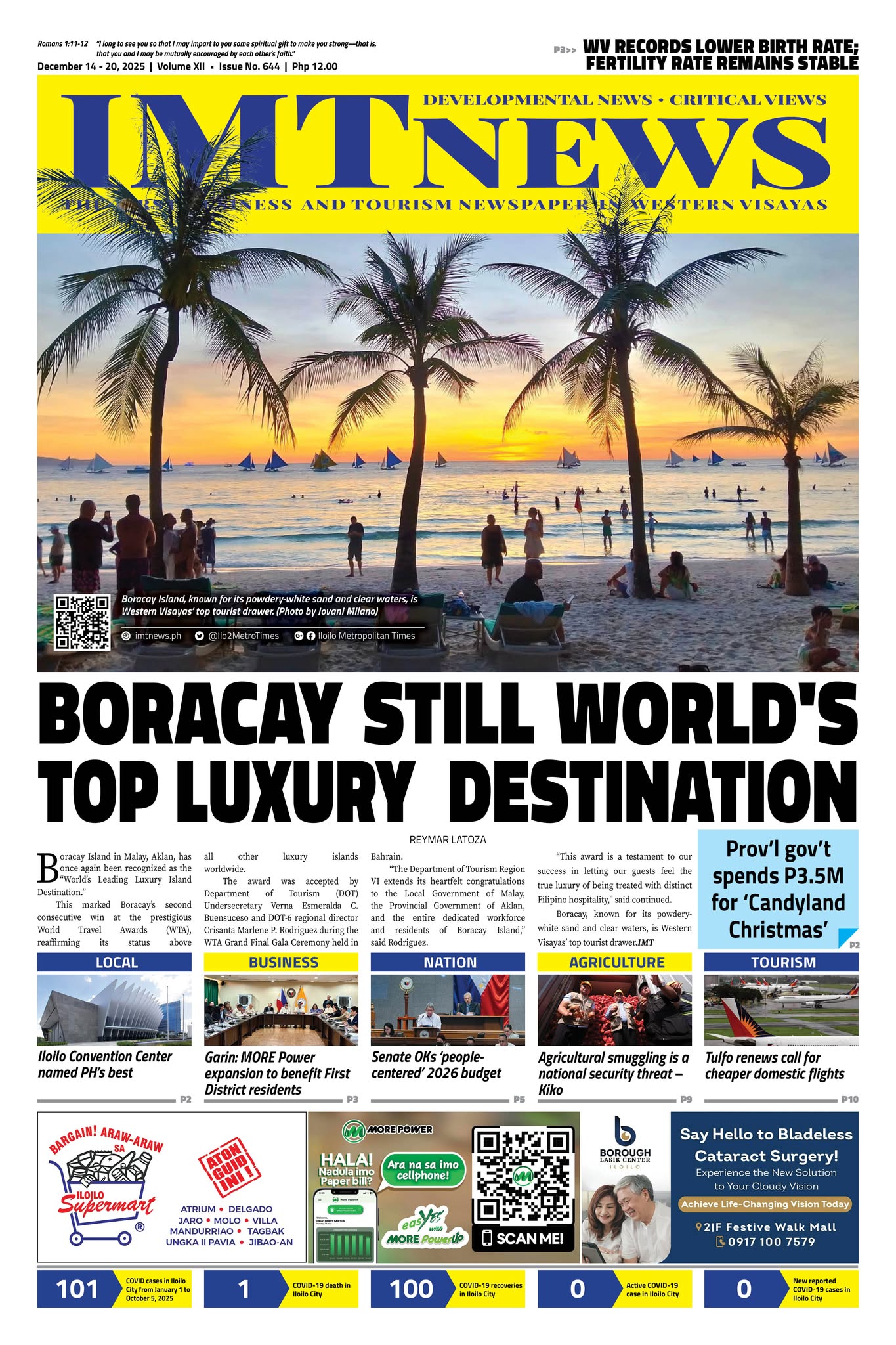(This is the continuation of my column last week about my winter in Korea Christmas)
While I don’t like the idea of such plant visits and sales pitches, we Filipinos should learn from the South Koreans in organizing tours in order to ensure that all tourists coming in are and will be subtly forced to buy our products. We have our OTOP or one town one product MSME strategy. If our guided tours are organized the same way as that in South Korea, the sustainability aspect of OTOP will be highlighted and the small producers will have the chance to work the whole year round and earn, which will in return empower them and improve their way of living. It will definitely ease poverty and encourage lesser dependence of the low income families from government dole out programs.
Take for example the province of Guimaras. The provincial government can take the lead through the provincial tourism office in organizing and clustering mango producers and value adding producers in one town or say two towns. Native products makers including novelty products producers will be clustered, placed in just one location and hosted by another town. Dried fish products and canned products producers will be clustered in another town. Artisan salt makers will be clustered in one location with a daily actual production for tourists to see and observe and will be hosted by another town. Food preparation will be improved so that every town can host a meal during the duration of the guided tour. The idea may not be original but surely it will ensure sustainability and empowerment for those who are involved in the process.
The approach is directed to a more organized tourism promotion with certain and well planned achievement of economic benefits. It can be inserted as part of the tourists’ itinerary say a morning spent in visiting the Navalas Church and the Siete Picados beach line a lunch hosted by a restaurant in Buenavista and the whole afternoon is spent in San Lorenzo for tourists to learn how to weave and make buri bags and other stuffs and so on and forth. The weavers, since clustered, can bring all their products and display it. Other than the experience, a credible salesman could make the pitch and ensure that each tourist will spend their money to buy the products, be it small or big.
The other role of the government is to campaign around the country and outside the country for visitors to come in groups and ensure that through the support of local tour agencies, guests will be coming whole year round. It’s by far the best way to realize the economic value of tourism instead of simply waiting for local tourists to come on weekends and spend a night or two while bringing their own food and simply enjoy the pristine beaches in the province. This appreciation of tourism is too elementary and will only satisfy the end of statistics. It can’t even encourage the restaurants to prepare grander menus since they are not bound to earn from visitors who bring their own food.
This strategy is also applicable to the city and province of Iloilo or even the rest of Western Visayas. It’s an overhaul of strategy perhaps but political will and foresight will eventually turn the very expensive plate to a more sustainable and income generating one. One that will eventually inspire more people to think local, work local and earn better.
Meanwhile, I still have a cough and a cold, the price of wanting to experience winter and spend Christmas away from home. Anyeong!






